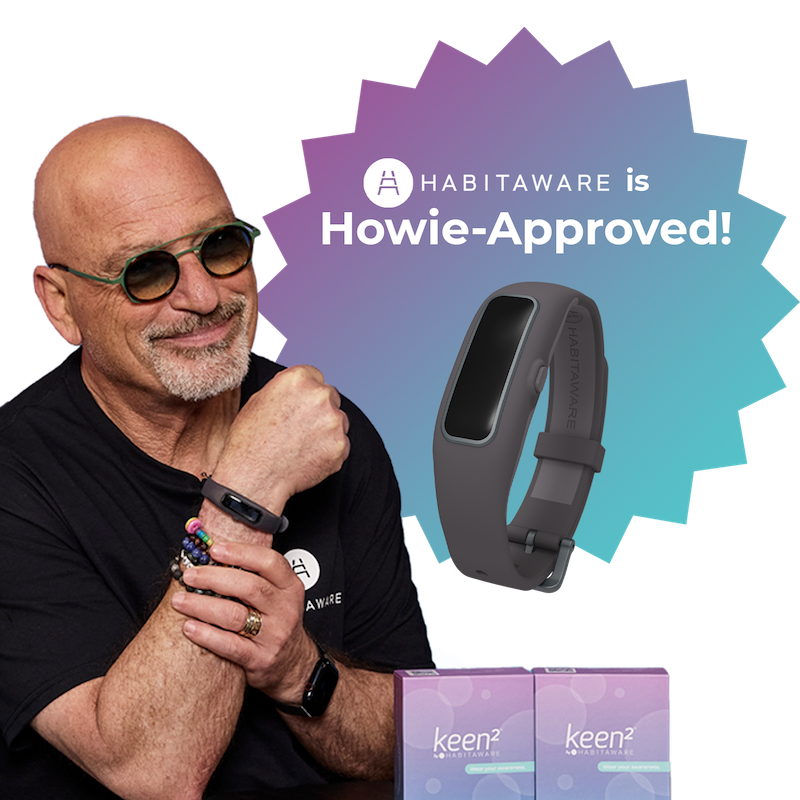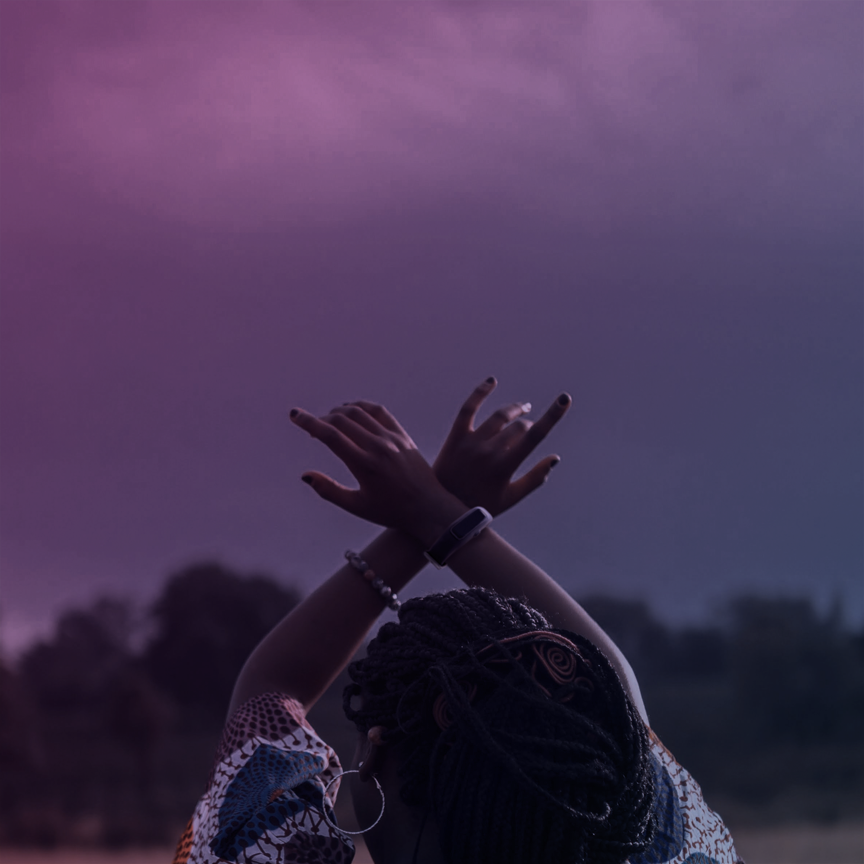By HabitAware Volunteer, Samu Gopi Raj

For those of us living with trichotillomania (hair pulling disorder, also known as trich), representation in media has long felt like a missing piece—something we crave but rarely see. We’ve spent years scanning the screen, looking for someone who shares our experience: the secretive pulling, the confusing mix of shame and relief, and the overwhelming isolation that can come with a Body-Focused Repetitive Behavior (BFRB).
Then, one day, it happened.
Amy Schumer’s character in the Hulu series Life & Beth casually pulled at her hair. It wasn’t a dramatic reveal or a moment played for shock—it was just there. Real. Quiet. Familiar. And for many in our community, it felt like a breakthrough. For the first time, we saw ourselves reflected on a mainstream platform, not as a punchline or a plot device, but as human beings with complex stories.
That one moment was powerful. But it also raises an important question: What does it mean to be seen in media—and how can representation help shape the way the world understands trichotillomania?
The Power of Being Seen
Authentic media representation of trichotillomania does more than validate individual experiences—it changes the cultural conversation. When people with BFRBs are represented with depth and empathy, it helps dismantle shame and stigma. It creates space for openness, encourages people to seek help, and invites families and communities to understand.
In Life & Beth, Schumer’s portrayal stands out because it’s rooted in personal truth. In interviews, she’s spoken openly about her own experiences with trich, which infuses her character’s behavior with a quiet, everyday realism. There’s no dramatic music cue when she pulls. No sudden “aha” moment where the habit is explained and cured. It just exists, the way it does for so many of us—in the background, ever-present, sometimes managed and sometimes not.
This kind of portrayal is invaluable. It tells us that our condition is not something shameful or bizarre. It’s simply a part of our story.
A Growing Catalog of Trichotillomania in Pop Culture
While Life & Beth is perhaps the most well-known recent example of trich on screen, it’s not alone. A growing number of films and series are beginning to incorporate BFRBs into their storytelling, offering more diverse and nuanced perspectives:
-
I Like Movies (2023): This indie coming-of-age film touches on trich within the context of teenage anxiety and identity. The depiction is subtle but thoughtful, capturing how hair-pulling can become a coping mechanism amid emotional chaos.
-
The Boys (Amazon Prime): Known for its dark humor and graphic storytelling, The Boys features a minor character with trich, showing that BFRBs can exist in every world—even in a dystopian superhero universe. It’s a reminder that mental health conditions don’t discriminate by genre.
-
Grand Army (Netflix): This teen drama explores various mental health issues, including trichotillomania, within the broader context of adolescent life. The show highlights how BFRBs can feel especially isolating in the high-pressure world of high school.
-
Black Spot (Netflix/France): In this supernatural thriller, one character’s hair-pulling is portrayed in a psychological and symbolic light, reminding us that BFRBs cross cultural and linguistic boundaries.
Each of these portrayals contributes to a mosaic of representation. Together, they normalize the reality of living with trich—and they open the door for future stories told with even more care and clarity.
Documentaries: Real Stories, Real Impact
While fictional portrayals can spark awareness, documentaries like Trichster go a step further. They provide a platform for people with trichotillomania to speak in their own words, without scripts or dramatic embellishment.
Trichster is especially powerful because it strips away the stereotypes and shows the day-to-day truth of living with trich. It’s not just about struggle—it’s about resilience, creativity, relationships, and hope. Watching someone speak openly about their hair-pulling on camera can be deeply healing for viewers who’ve carried this burden in silence.
Documentaries like Trichster help the broader public understand that trich is not a quirky habit or a character flaw—it’s a diagnosable condition, and it deserves the same empathy and support as any other mental health challenge.
When Representation Misses the Mark
Of course, not all representation is helpful. Some portrayals still rely on outdated tropes, treating hair-pulling as a shorthand for “crazy” or “unstable.” In certain shows or films, a character might pull their hair during a breakdown, with no explanation or follow-up. These portrayals can reinforce harmful myths and deepen the shame many people already feel.
That’s why how something is depicted matters just as much as what is depicted.
Authenticity comes from including people with lived experience in the creative process—whether as writers, consultants, or actors. Shows that do this well often resonate more deeply with our community, because they go beyond surface-level symptoms and explore the emotional layers of BFRBs.
What the Community Is Saying
When accurate trich representation appears, the BFRB community responds—loudly, joyfully, and often with tears of relief. Social media lights up with messages like:
“I’ve never seen someone with trich on screen before. I felt so seen.”
“This made it easier to talk to my family about what I’ve been dealing with.”
“It’s not just me.”
These reactions underscore the emotional weight that comes with being recognized. For those who have lived in silence or secrecy, media representation can be a turning point—a moment when the internal battle becomes a shared story.
These portrayals also help those without BFRBs better understand what we go through. A friend or parent who watches Life & Beth might finally get it. A partner who sees Trichster might realize why their loved one wears a hat indoors or avoids the mirror. That understanding can be life-changing.
Where We Go From Here
The future of BFRB representation in media is full of possibility. As creators become more mindful and mental health takes a more central role in storytelling, we hope to see even richer, more compassionate portrayals of trichotillomania.
But with this progress comes responsibility.
If you’re a writer, director, or producer including trich in your story, ask yourself:
-
Have I consulted people with lived experience?
-
Am I portraying this condition with dignity and realism?
-
Is the trichotillomania treated as part of the character’s whole life, not just a symptom of emotional instability?
When the answer is yes, you’re not just telling a good story—you’re helping someone feel seen for the first time.
Beyond Representation: Tools for Daily Support
While media can validate and uplift us, living with trichotillomania requires daily resilience. Awareness is crucial, but awareness alone doesn’t stop the urge.
That’s where tools like HabitAware's Keen2 bracelet come in.
Keen2 is more than a wearable—it’s a breakthrough in real-time awareness training for BFRBs. By detecting hair-pulling hand movements and delivering a gentle vibration, Keen2 empowers you to recognize and interrupt the behavior in the moment. It gives you that critical pause—space to choose a different path.
Just as a character on screen can help you feel less alone, Keen2 helps you feel more in control.
And perhaps even more powerful than the device itself is the community behind it. The Keen2 app offers tracking tools and insights to better understand your patterns. Our Online Community—filled with others navigating the same journey—remind you that healing is not just possible, it’s shared.
Final Thoughts: When Stories Become Mirrors
Representation is never just about the story on screen—it’s about what that story reflects back to us. For those with trichotillomania, finally seeing ourselves in media is more than a milestone—it’s a movement.
We’re stepping out of the shadows, telling our truths, and finding tools that meet us where we are.
So when you next see a character gently pulling her hair, know this: it’s not just fiction. It’s someone’s lived experience. Maybe yours. Maybe mine. Maybe someone who, for the first time, realizes they are not alone.
And from that recognition comes the strength to seek support, build awareness, and reclaim control—one mindful moment at a time.
If you’re living with trichotillomania, know this: your story matters. And whether it’s shared on a screen, in a support group, or through a vibration on your wrist—your healing is real, and you are not alone.
Ready to start your awareness journey? Learn more about Keen2 and join a growing community dedicated to thriving with BFRBs.


